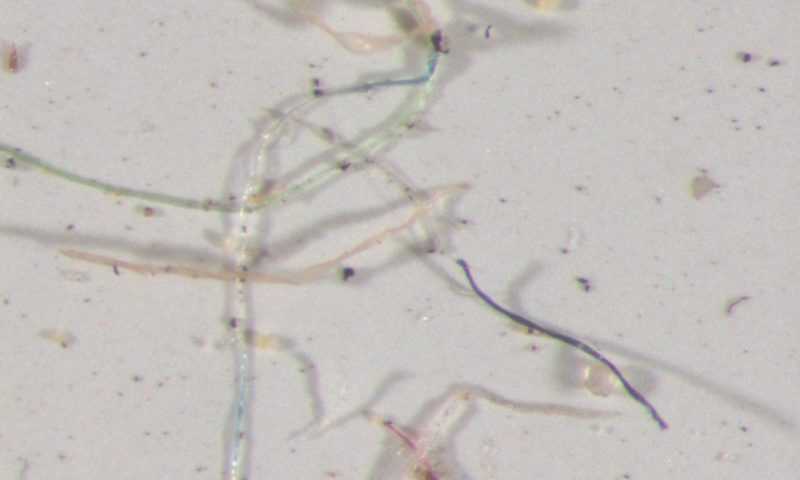
10 Effective Ways to Minimize Microplastic Waste in Your Household
- Cody Medina
- September 27, 2023
- Sustainable Living
- 0 Comments
The presence of microplastics in the human body is a concerning and relatively recent discovery that has raised significant alarm among researchers and environmentalists alike. These minuscule plastic particles, often measuring less than 5 millimeters in size, have infiltrated our bodies through various routes, including the air we breathe, the food we eat, and the water we drink.
Fortunately, there are things we can do to at least reduce our exposure to them in our homes.
How to keep microplastics out of your home
Microplastics, tiny plastic particles less than 5mm in size, have become pervasive in our environment, posing significant threats to ecosystems and human health. Many everyday household items contribute to microplastic pollution, but there are simple yet impactful steps you can take to reduce this problem. Here are 10 ways to minimize microplastic waste in your household:
Choose Natural Fibers
Opt for clothing and textiles made from natural fibers like cotton, wool, or silk instead of synthetic materials like polyester or nylon. Synthetic fabrics shed microplastics when washed. Natural fibers such as cotton, wool, silk, hemp, and linen are biodegradable. When these fabrics break down, they do not leave behind harmful microplastics. Instead, they decompose into organic matter, which is less detrimental to the environment.
Unlike synthetic fibers that continuously shed tiny plastic particles, natural fibers shed fewer microfibers during washing. This significantly decreases the number of microplastics released into the water supply and environment. The production of synthetic fabrics often involves the use of fossil fuels and energy-intensive processes, contributing to greenhouse gas emissions.
Natural fibers tend to have a lower environmental footprint as they are derived from renewable resources. Natural fibers are breathable and comfortable to wear, making them ideal for clothing close to the skin. They allow better airflow and moisture absorption, reducing the need for synthetic activewear.
Choosing natural fibers supports sustainable farming practices. Organic cotton, for example, is cultivated without harmful pesticides and reduces the environmental impact of conventional cotton production. Natural fibers offer timeless elegance and versatility. They are often associated with high-quality, long-lasting clothing, reducing the need for frequent replacements.
Many natural fibers take dyes and prints well, making them ideal for eco-friendly and non-toxic clothing designs. By selecting clothing made from natural fibers, you also align with ethical and sustainable fashion practices, contributing to a more responsible and conscious clothing industry.
Use a Microfiber Filter In Your Washer
Install a microfiber filter in your washing machine to capture microplastics released during laundry cycles. This prevents them from entering the wastewater system. One significant contributor is synthetic clothing. Fabrics like polyester and nylon shed tiny microplastic fibers when laundered, which then enter the wastewater and ultimately the environment.
Microfiber filters are designed to capture these minuscule plastic fibers during the washing process. They act as a barrier, preventing the microplastics from entering the water system. Here’s how to effectively use a microfiber filter in your household: Start by selecting a microfiber filter designed to fit your specific washing machine model. These filters are typically available online or at specialty stores. Make sure to follow the manufacturer’s recommendations regarding compatibility and installation.
Avoid Single-Use Plastics
In our quest to prevent the infiltration of microplastics into our bodies, one of the most effective actions we can take is to reduce our consumption of single-use plastics. These disposable items, like plastic bags, straws, and water bottles, are a major contributor to plastic pollution, and they often break down into microplastics over time. Here’s why making a conscious effort to avoid single-use plastics is not only beneficial for the environment but also for safeguarding your own well-being:
1. Responsible Consumption: The first step is to become a mindful consumer. Whenever possible, opt for products that are not packaged in single-use plastics. Choose items with minimal or eco-friendly packaging or consider bulk purchases to reduce the need for individually wrapped products.
2. Reusable Alternatives: Embrace reusable alternatives. Invest in a durable, refillable water bottle, and carry a reusable shopping bag. Switch from disposable plastic cutlery and straws to their eco-friendly counterparts made from materials like bamboo or stainless steel. By making these simple switches, you can significantly cut down on the plastics that find their way into your daily life.
3. Eco-Friendly Food Containers: When packing meals or snacks, opt for reusable containers made from materials such as glass or stainless steel. These options not only reduce plastic waste but also minimize the risk of microplastics leaching into your food.
4. Sustainable Grocery Shopping: Reduce your plastic footprint at the grocery store. Choose loose produce instead of items packaged in plastic, and bring your own reusable produce bags. Consider buying in bulk and using your own containers for items like grains, pasta, and nuts.
5. Support Legislation: Advocate for policies and regulations aimed at reducing single-use plastics. Support local and national initiatives that promote responsible plastic use and recycling.
6. Educate and Inspire: Share your knowledge and passion for reducing plastic waste with friends and family. Inspire others to join the movement by demonstrating the positive impact of these changes on both personal health and the environment.
By avoiding single-use plastics, you not only reduce your risk of ingesting harmful microplastics but also contribute to the larger effort to combat plastic pollution.
Filter Your Tap Water
Invest in a quality water filter that can remove microplastics from your tap water. This ensures that you are not unknowingly consuming microplastics in your drinking water.
Many household water filters, such as activated carbon filters and reverse osmosis systems, use mechanical filtration to trap particles in the water as it passes through the filter medium. Microplastics, being solid particles, can be effectively captured by these filters, preventing them from entering your drinking water.
If you use a filter on your washing machine’s wastewater discharge, it can capture synthetic fibers released from your clothing. This step prevents these fibers from ultimately reaching water bodies and contributing to the microplastic problem.
Beyond microplastic reduction, water filters can also enhance the overall quality and taste of your tap water by removing other contaminants, such as chlorine, heavy metals, and sediments.
Choose Natural Cleaning Products
Select eco-friendly cleaning products that do not contain microplastics or harmful chemicals. Many conventional cleaning products include abrasive microplastics as scrubbing agents.
Many natural cleaning products use biodegradable ingredients like plant-based surfactants and enzymes, which break down in the environment without leaving behind microplastics. Natural cleaning products do not contain microbeads, eliminating one common source of microplastic pollution. Natural products are also often free from harmful chemicals, making them safer for you, your family, and the environment.
Skip Products with Microbeads
Exfoliating and cosmetic products often contain microbeads, tiny plastic particles that can harm the environment. Check product labels and choose items with natural exfoliants like sugar or salt.
The most eco-friendly option is to use biodegradable glitter made from natural materials such as plant-based cellulose. These glitters break down in the environment, causing minimal harm. When shopping for glitter, look for brands that offer biodegradable options.
Before disposing of glitter, consider whether it can be reused. You can collect excess glitter from projects and store it in containers for future use, reducing the need to purchase more.
To prevent glitter from spreading around your workspace, use a “glitter catcher” or a tray underneath your crafting area. This makes it easier to collect excess glitter for reuse or proper disposal.
If you need to clean up glitter, avoid using a regular vacuum cleaner, as it can spread the particles into the air and be difficult to clean. Instead, use a handheld vacuum specifically designed for small particles or a lint roller to pick up glitter.
If you have traditional plastic glitter that cannot be reused or is mixed with other materials, dispose of it properly. Place it in a sealed container, such as a small plastic bag or an airtight jar, to prevent it from escaping into the environment. Then, throw it in the trash.
Reduce Packaging Waste
When grocery shopping, opt for products with minimal or eco-friendly packaging. Bring your reusable shopping bags and produce bags to reduce plastic waste.
When buying packaged goods, choose products with recyclable or compostable packaging materials. Support companies that prioritize sustainable packaging practices, such as using recycled materials or reducing plastic content.
Plan meals to minimize food waste, which often leads to excessive packaging waste. Purchase fresh produce from local markets, which often have less packaging compared to pre-packaged items at larger stores.
Cook from Scratch
Cooking from scratch is not just a delightful culinary adventure; it’s also a powerful strategy to shield yourself from the potential harms of microplastics in your food. When you prepare your meals using fresh, whole ingredients, you gain more control over what goes into your dishes and, consequently, reduce the risk of unwittingly introducing microplastics into your diet. Here’s why this approach is a game-changer:
1. Ingredient Transparency: When you cook from scratch, you choose every ingredient that goes into your meal. This means you can opt for fresh, unpackaged produce and ingredients, significantly reducing the likelihood of microplastics lurking in your food.
2. Minimize Packaging: Pre-packaged convenience foods often come wrapped in plastic, which can shed microplastics into the contents. By cooking from scratch, you can bypass these heavily packaged options, reducing your exposure to these harmful particles.
3. Freshness Is Key: Fresh foods, like fruits, vegetables, and meats from local sources, are less likely to have encountered plastic contamination during processing and packaging. By sourcing your ingredients fresh, you can enjoy meals that are not only healthier but also less likely to contain microplastics.
4. Home Cooking Techniques: When you prepare meals at home, you have control over cooking methods. Opt for non-plastic cooking utensils and avoid non-stick cookware with plastic coatings that can deteriorate over time. Choose stainless steel, cast iron, or other non-plastic alternatives.
5. Reducing Waste: Cooking from scratch often generates less plastic waste compared to relying on takeout or pre-packaged foods. You can store leftovers in glass or stainless steel containers, further minimizing plastic exposure.
6. Food Safety: By handling your ingredients directly, you can ensure proper food handling and storage practices, reducing the chances of contamination by plastic particles from improper packaging or handling in commercial kitchens.
7. Savory Creativity: Cooking from scratch is an opportunity to explore your culinary creativity and experiment with various flavors and cuisines. It fosters a deeper connection to your food and a greater appreciation for the ingredients you use.
Properly Dispose of Electronics
Dispose of old electronic devices through proper channels like e-waste recycling centers. Electronics can contain plastic components that break down into microplastics if not disposed of correctly.
Participating in electronic recycling and e-waste programs ensures that your old devices are properly disassembled and recycled. This reduces the likelihood of plastic components breaking down and releasing microplastics into the environment.
Choose certified e-waste recycling facilities that adhere to environmentally friendly practices. These facilities are less likely to contribute to microplastic pollution.
Electronics should not be thrown in landfills, as they can take centuries to decompose and may release microplastics during this process. And be cautious when disassembling electronic devices at home. Accidental damage to plastic components during DIY repair attempts can lead to microplastic pollution.
Support Sustainable Brands
Choose to support brands and products that prioritize sustainability and responsible manufacturing processes. Look for certifications like “microplastic-free” or “eco-friendly” on product labels.
Remember, every small effort counts when it comes to reducing microplastic waste. By adopting these practices, you not only contribute to a healthier environment but also set an example for others to follow. Together, we can make a substantial impact in combating microplastic pollution and protecting the planet for future generations.

